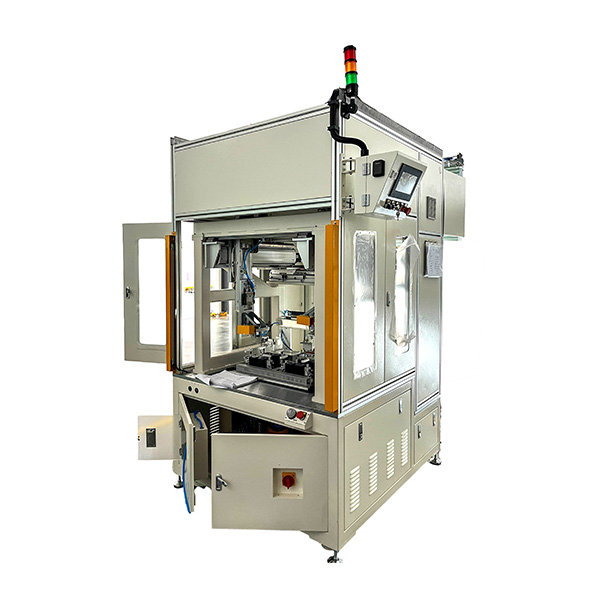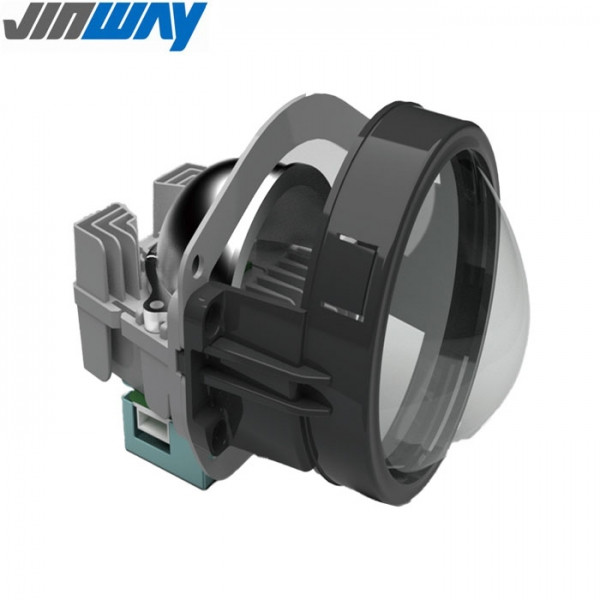AI in Optical Testing: How Machine Learning Is Enhancing Defect Detection
In the rapidly evolving world of manufacturing, the need for precision and efficiency is more critical than ever. As industries such as automotive, electronics, and optics strive for higher-quality products, the demand for advanced testing technologies has skyrocketed. Optical testing, which measures the light output, uniformity, and precision of visual systems, has become an essential part of quality control. With the advent of Artificial Intelligence (AI) and Machine Learning (ML), these traditional testing processes are undergoing a transformation, enhancing defect detection and accelerating production timelines. At Jinway Technology Co., Ltd., we are at the forefront of this shift, integrating AI and ML into our optical testing solutions to improve manufacturing efficiency, accuracy, and overall product quality.
The Role of Optical Testing in Manufacturing
Optical testing is crucial for assessing the performance of lighting systems, displays, and other optical components. These tests measure factors such as light intensity, beam distribution, color accuracy, and uniformity. For industries like automotive lighting, precision is vital, as even the smallest defect can lead to compromised safety or product performance.
Traditionally, optical testing has relied on manual inspection or basic automated systems that use predefined thresholds to detect anomalies. While these methods are effective, they often require human oversight and are limited in identifying subtle defects or variations that could affect performance. As a result, manufacturers have turned to AI and machine learning to improve defect detection and to make these processes more efficient and reliable.
How AI Enhances Optical Testing
Machine learning, a subset of AI, allows machines to learn from data patterns and improve their decision-making abilities over time without explicit programming. In optical testing, AI-driven systems can analyze large sets of data collected from optical sensors, cameras, and measurement instruments, identifying patterns that would otherwise be undetectable by traditional systems.
1. Advanced Defect Detection
AI-powered algorithms are capable of analyzing images captured during optical tests to identify defects such as scratches, cracks, alignment issues, and color discrepancies. By training on vast datasets of both defect-free and defective samples, the system learns to recognize even the most subtle imperfections. Unlike traditional methods, AI doesn’t rely on manually set thresholds, making it more adaptive and sensitive to a wider range of defects.
For example, in automotive lighting production, AI systems can detect issues in light intensity distribution, ensuring that each lamp conforms to the required beam pattern without manual intervention. This allows for a more thorough inspection, which reduces the likelihood of defects slipping through the cracks.
2. Real-Time Defect Detection and Classification
Machine learning algorithms can be trained to not only identify defects but also to classify them based on severity and type. This enables systems to flag critical issues that might compromise product performance and automatically sort components into “pass” or “fail” categories.
This real-time defect detection ensures that problems are caught early in the production process, before they can affect the final product or lead to costly recalls. With AI, manufacturers can achieve near-zero defect rates, increasing both production efficiency and product quality.
3. Automated Visual Inspection
Traditional visual inspections, whether human or machine-based, are time-consuming and prone to errors. AI-powered visual inspection systems, on the other hand, can automate the entire process, significantly increasing the throughput of optical testing lines.
Machine learning algorithms are trained to analyze visual data from high-resolution cameras, measuring aspects like uniformity, reflectivity, and color variations. The AI system can inspect thousands of units per hour, learning and improving from each test. This process is not only faster but also more accurate than traditional methods, minimizing human error and reducing labor costs.
4. Predictive Maintenance for Testing Equipment
AI can also be leveraged to monitor the health and performance of optical testing equipment. By collecting and analyzing data on equipment performance, AI models can predict when a machine is likely to fail or require maintenance, allowing manufacturers to perform preventative maintenance before issues arise.
This predictive maintenance approach reduces downtime, extends the lifespan of testing equipment, and ensures that optical testing systems are always operating at peak efficiency. In high-demand production environments, this can result in significant cost savings and fewer disruptions to production.
The Future of AI in Optical Testing
As AI technology continues to evolve, the potential for further advancements in optical testing is vast. Future developments could include greater automation, improved defect classification, and the ability to identify new types of defects that were previously undetectable. With the rise of smart factories and Industry 4.0, the integration of AI and machine learning in testing systems will become increasingly important in driving efficiency, accuracy, and innovation across industries.
Conclusion
AI and machine learning are transforming the way we approach optical testing in manufacturing. With the ability to detect defects faster, more accurately, and with greater consistency, AI is driving the next generation of quality control in industries where precision is paramount. At Jinway Technology Co., Ltd., we are proud to integrate these powerful technologies into our testing solutions, empowering manufacturers to meet the high standards of modern production while improving efficiency, reducing costs, and maintaining high product quality.







